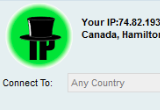
No ip duc alternative free#
However, I don’t use that free hostname for my Exchange namespaces. If you want to avoid that 30 day confirmation process their paid plans are very inexpensive, and you can even use them to host your own domain name. If my IP doesn’t change for 30 days then I simply click a link in an email that No-IP sends me to re-confirm that I am using the hostname.
No ip duc alternative install#
My DSL router includes a feature that will automatically update No-IP with my new public IP address each time it changes (as an alternative, they provide a client that you can install to handle this). Most recently I used No-IP who have a free option. You can shop around and choose one you’re comfortable with. There are a variety of providers out there, some are free and some are paid. The solution I use for dynamic IP addresses is to sign up with a dynamic DNS provider. If you’re trying to learn about Exchange Server then having inbound connectivity to services such as Outlook Anywhere, OWA, and ActiveSync is helpful, and so is being able to establish inbound mail flow or to set up a Hybrid configuration with Office 365. Inbound Connections to a Dynamic Public IP Addressįirst, the inbound connections. But let’s take a look at the solutions anyway.


Inbound connections to the server such as OWA (HTTPS) or incoming email (SMTP) will stop working if the dynamic IP changes and the DNS records for your external URLs (such as the OWA URL) and MX records aren’t updated to the new IP address.There’s three challenges that present themselves here: But it also comes up occasionally for businesses running on those types of internet connections. This is most common when people are running an Exchange Server test environment at home with a residential, consumer-grade internet connection.

Every now and then I get a question relating to running an Exchange server on an internet connection that only has a dynamic public IP address available.


 0 kommentar(er)
0 kommentar(er)
